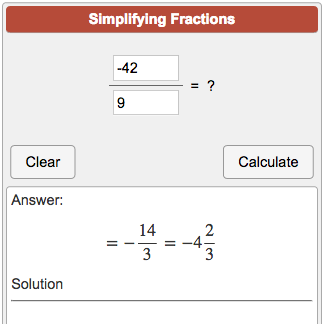An improper fraction is a fraction that has a numerator which is greater than the denominator. This means that the value of the fraction is greater than one. 2 4 5 is an example of an improper fraction as it has a numerator of 2 and denominator of 5, making its value greater than one.

Table Of Content:
- Convert to Improper Fraction 2 4/5 | Mathway
- How do you write 2 4/5 an improper fraction? | Socratic
- 2 4/5 as an improper fraction
- What is 2 4/5 as an improper fraction? | Study.com
- Mixed Number to Improper Fraction Calculator
- What is 5 2/4 as an Improper Fraction?
- How to convert 2 4/5 to an improper fraction
- Simplifying Fractions Calculator
- Fraction calculator - calculation: 3 3/4 x 2 4/5
- Mixed numbers and improper fractions review (article) | Khan ...
1. Convert to Improper Fraction 2 4/5 | Mathway
https://www.mathway.com/popular-problems/Basic%20Math/14629
Basic Math Examples ... A mixed number is an addition of its whole and fractional parts. ... Add 2 2 and 45 4 5 .
2. How do you write 2 4/5 an improper fraction? | Socratic
https://socratic.org/questions/how-do-you-write-2-4-5-an-improper-fraction May 29, 2018 ... 14/5 Think about it like this 1 = 5/5 so 2 xx 5/5 = 10/5 now add the fractions 10/5 + 4/5 = 14/5.
May 29, 2018 ... 14/5 Think about it like this 1 = 5/5 so 2 xx 5/5 = 10/5 now add the fractions 10/5 + 4/5 = 14/5.
3. 2 4/5 as an improper fraction
https://calculator.name/as-improper-fraction/2$4/5
What is 2 4/5 as an improper fraction? 2 4/5 as an improper fraction is 14/5. Here we will show you how to convert 2 4/5 mixed number to improper fraction ...
4. What is 2 4/5 as an improper fraction? | Study.com
https://study.com/academy/answer/what-is-2-4-5-as-an-improper-fraction.html
The improper fraction 14/5 is equal to the mixed number 2 4/5. To convert the mixed number to the improper fraction, first convert the whole number...
5. Mixed Number to Improper Fraction Calculator
https://www.calculatorsoup.com/calculators/math/mixed-number-to-improper-fraction.php Calculator to convert mixed numbers to improper fractions, showing the work. ... from Step 1 to the numerator; Write answer from Step 2 over the denominator.
Calculator to convert mixed numbers to improper fractions, showing the work. ... from Step 1 to the numerator; Write answer from Step 2 over the denominator.
6. What is 5 2/4 as an Improper Fraction?
https://thefractioncalculator.com/MixedNumberToImproperFraction/what-is-5-2/4-as-an-improper-fraction.html
Here we will show you how to convert the mixed number 5 2/4 to an improper fraction. In other words, we will convert 5 2/4, which contains both a whole ...
7. How to convert 2 4/5 to an improper fraction
https://coolconversion.com/math/mixed-number-to-improper-fraction/How%20to%20write_2-4/5_as%20an%20improper%20fraction
Use our calculator to transform the mixed number 2 4/5 to an improper fraction. You can learn the step-by-step process through your own examples.
8. Simplifying Fractions Calculator
https://www.calculatorsoup.com/calculators/math/fractionssimplify.php Convert an improper fraction to a mixed number. ... 14÷3=4R2. Therefore:143=423. Share this Answer Link: help ... The mixed number is 5 1/3. So 16/3 = 5 1/3 ...
Convert an improper fraction to a mixed number. ... 14÷3=4R2. Therefore:143=423. Share this Answer Link: help ... The mixed number is 5 1/3. So 16/3 = 5 1/3 ...
9. Fraction calculator - calculation: 3 3/4 x 2 4/5
https://www.hackmath.net/en/calculator/fraction?input=3+3%2F4+x+2+4%2F5
How do we solve fractions step by step? Conversion a mixed number 3 3/4 to a improper fraction: 3 3/4 ...
10. Mixed numbers and improper fractions review (article) | Khan ...
https://www.khanacademy.org/math/cc-fourth-grade-math/imp-fractions-2/imp-mixed-numbers/a/mixed-numbers-and-improper-fractions-review
What does an improper fraction mean?
An improper fraction is a fraction that has a numerator which is greater than the denominator. This means that the value of the fraction is greater than one.
What are examples of improper fractions?
Examples of improper fractions include 3/2, 7/5, 9/4, and 10/3.
How do you calculate the value of an improper fraction?
To calculate the value of an improper fraction, divide the numerator by the denominator. For example, for 2 4 5, divide 2 by 5 to get 0.4 as its value.
What happens when you add two or more fractions together?
When adding two or more fractions together, they must first be converted to their lowest common denominators before they can be added together properly. The result will be another proper or improper fraction depending on how many proper and improper fractions were combined in the subtraction process.
How can you convert an improper fraction into a mixed number?
To convert an improper fraction such as 2 4 5 into a mixed number, divide the numerator by denominator to get 0.4. Multiply this result by 1 and add it to the original numerator (2). In this case, you would end up with 2 + 0.4 = 2¼ which is written as the mixed number 2 1/4 .
Conclusion:
As demonstrated above, understanding what an improper fraction means and how it works can make all your maths problems easier and help you solve them more accurately! With knowledge on how to calculate its value and how to convert it into a mixed number if need be, you should have no trouble working with any kind of fractions!
